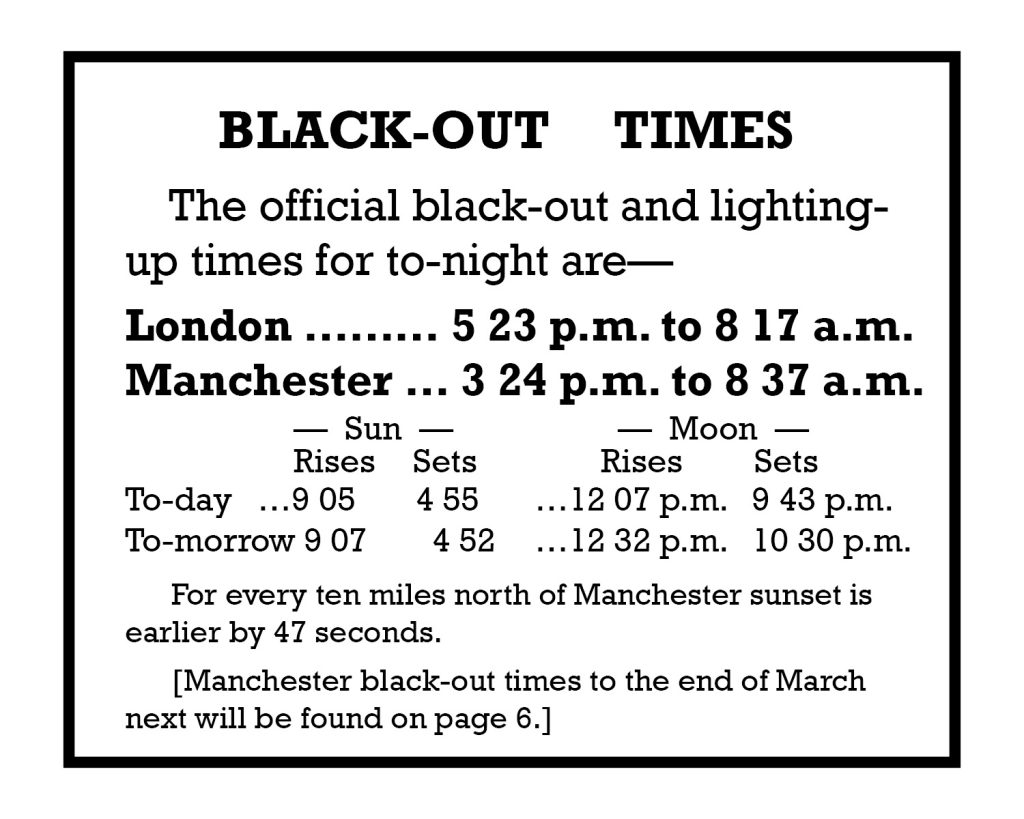Chronology of key events (1939 to 1940)

1939
- Germany invaded Poland on September 1, 1939.
- British Prime Minister Neville Chamberlain declared that Britain was at war with Germany on September 3, 1939.
- King George VI speaks to the nation on September 3, 1939.
1940
- The Battle of Britain took place between July 10, 1940, and October 31, 1940. This was a large-scale German military air campaign against Great Britain. Members of the Royal Air Force successfully defended the United Kingdom against the German Luftwaffe.
- During this period, the German air force systematically bombed the city of London, in the south of England. These attacks were known as the London Blitz.
- Bombings also took place in southern, central, and northern England and Manchester was first bombed in August 1940.
- By October of 1940, most of the Luftwaffe raids took place at night to avoid counterattacks by the British Royal Air Force.
- The German planes typically dropped high explosive and incendiary bombs in order to destroy buildings and cause fires.
- Manchester experienced bombings in the summer and fall of 1940.
- Then, on December 22 and 23, 1940, they experienced two heavy bombings that became known as the Christmas Blitz.
Manchester is an industrial city and at that time was considered the centre for the textile industry (“Cottonopolis”) in Britain as well as for general manufacturing (e.g., automotive manufacturing) and warehousing. Here is a map of Manchester, circa 1940. The population of Manchester was approximately 2.6 million.
Source: Manchester Archives Local Studies
Note:This map is interactive (zoom in and out and click on dots to identify key locations)
German air raids begin in the spring and summer of 1940, with heavy air raids began later that year. Liverpool was bombed for four days in a row, starting on Friday, December 20. And, three days before Christmas 1940, the German Luftwaffe heavily bomb Manchester.
On the home front, Britons already had had access to at least two types of home-based air shelters: Anderson shelters and Morrison shelters. In addition, community air raid shelters have been established in a variety of buildings and spaces in British towns and cities, including Manchester.
And the whole country follows blackout rules: Lights and lighting can only be used between sunrise and sunset.
At 6:38 p.m. on Sunday, December 22, the air raid sirens rang out and the German Luftwaffe proceeded to drop approximately 7,000 to 10,000 incendiary bombs on Manchester. The bombs fell sometimes in “waves and waves” –in ones and twos–and sometimes a dozen at a time–in two areas of the city centre.
The bombs targeted central Manchester, including Manchester Cathedral. You can smell smoke and the sky is lit up from the fires burning in the city.
The Manchester fire brigade is depleted because many men and trucks were sent to Liverpool the day. That city was hit by a similar wave of bombings on December 20 and 21.
Fires break out in the bombed areas and the city burns for hours. The Manchester fire brigade was understaffed as 300 men and 30 pumps were in Liverpool, which had been bombarded the day before. Streets were turned to rubble, in various neighbourhoods, few buildings remained intact/standing.
Click on Next (below, right) to move to the next page.


